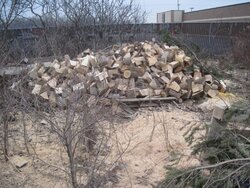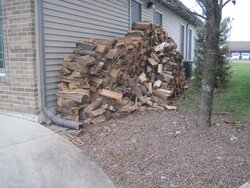firecracker_77
Minister of Fire
To dry it best, off the ground and stacked in single rows. Stack it where it will get wind and do not try to stack really neat. Stack it rather loosely for the air circulation. Stacking loosely like this also means to not stack it very high as it will not be as stable. 4' would be my maximum and perhaps that might be too high. Just remember that it is air circulation that you need the most.
Stacked in the heap looks impressive to some but only that wood that is on the outside of the stack will dry. The rest will happily hold most if not all of its moisture so that you can do battle with that later. Better to get it all drying ASAP.
I hear you. I have put about 10 hours this week in the evening cutting and tossing that wood into a pile. I had a bunch of wood in log form laying around on the ground in piles. Some of it was starting to get punky. I had to get it cut even if it won't dry ideally in the mound; it is on pallets at least, so it should be less likely to be wasted by rot.
As an aside, I am cutting really small pieces. About 7-9" long about 5-7" wide. These little chunks have alot of air exposure on at least a couple sides for the rectangular shaped pieces. In my experience, these will dry much quicker than a big split. For my little stove, I can really pack a firebox full with smaller chunks as opposed to larger pieces sometime irregularly shaped.




